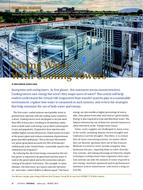This paper documents the unique operations journey and an overview of the accompanying model-based analysis of the award-winning Kendeda Building for Innovative Sustainable Design, designed to become the most environmentally sustainable classroom and lab building in the Southeast US, addressing performance metrics including energy and water use. As to energy, the primary goal was to achieve the Leadership in Energy and Environmental Design (LEED) Zero Energy as well as the International Living Future Institute’s (ILFI) Living Building Challenge (LBC) certifications, exceeding a net-positive energy threshold of 5% based on proven performance during a 12-month period. A few months after the building began its operation in late 2019, the COVID-19 pandemic hit, altering building operations and disrupting the planned course for certification. A calibrated model based on post-occupancy data of the building’s energy and water performance was created and used to support the claim that the Kendeda Building would still have been sufficiently net-positive for energy if the performance year went under two different scenarios: a hypothetical “business as usual” year without the pandemic, and a full-year of extreme-load operation.
Product Details
- Published:
- 2022
- Number of Pages:
- 10
- Units of Measure:
- Dual
- File Size:
- 1 file , 1.6 MB
- Product Code(s):
- D-BCS22-C047
- Note:
- This product is unavailable in Russia, Belarus


